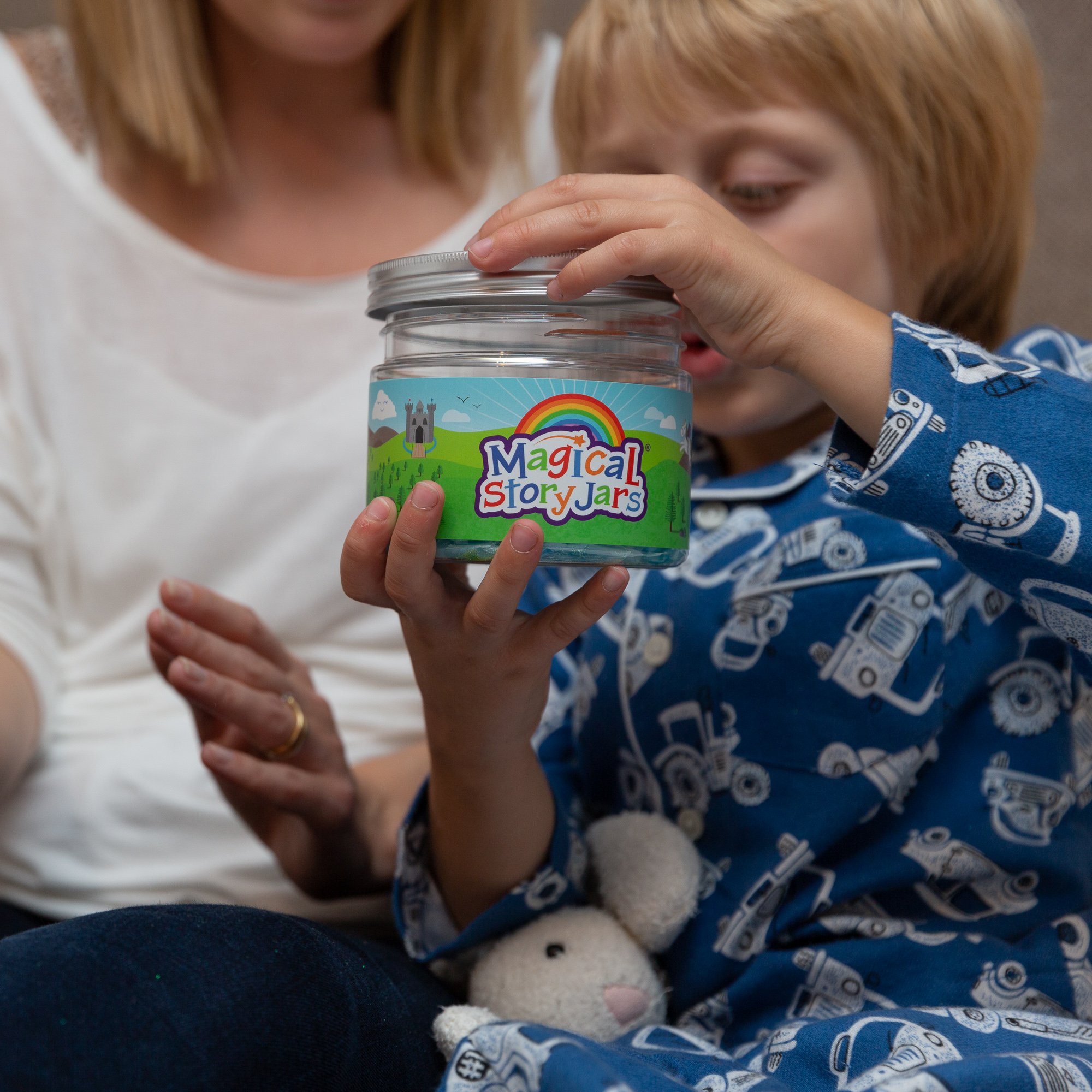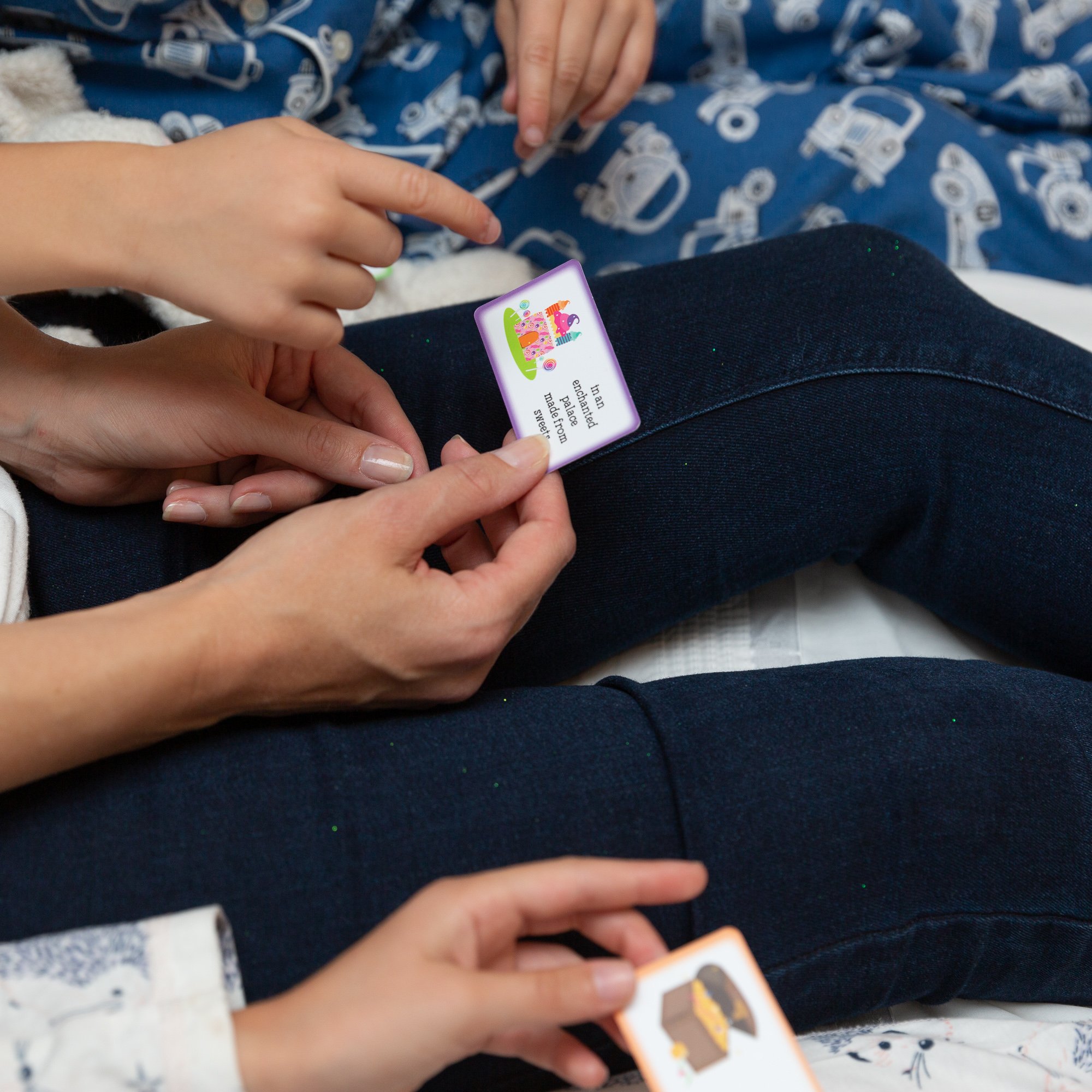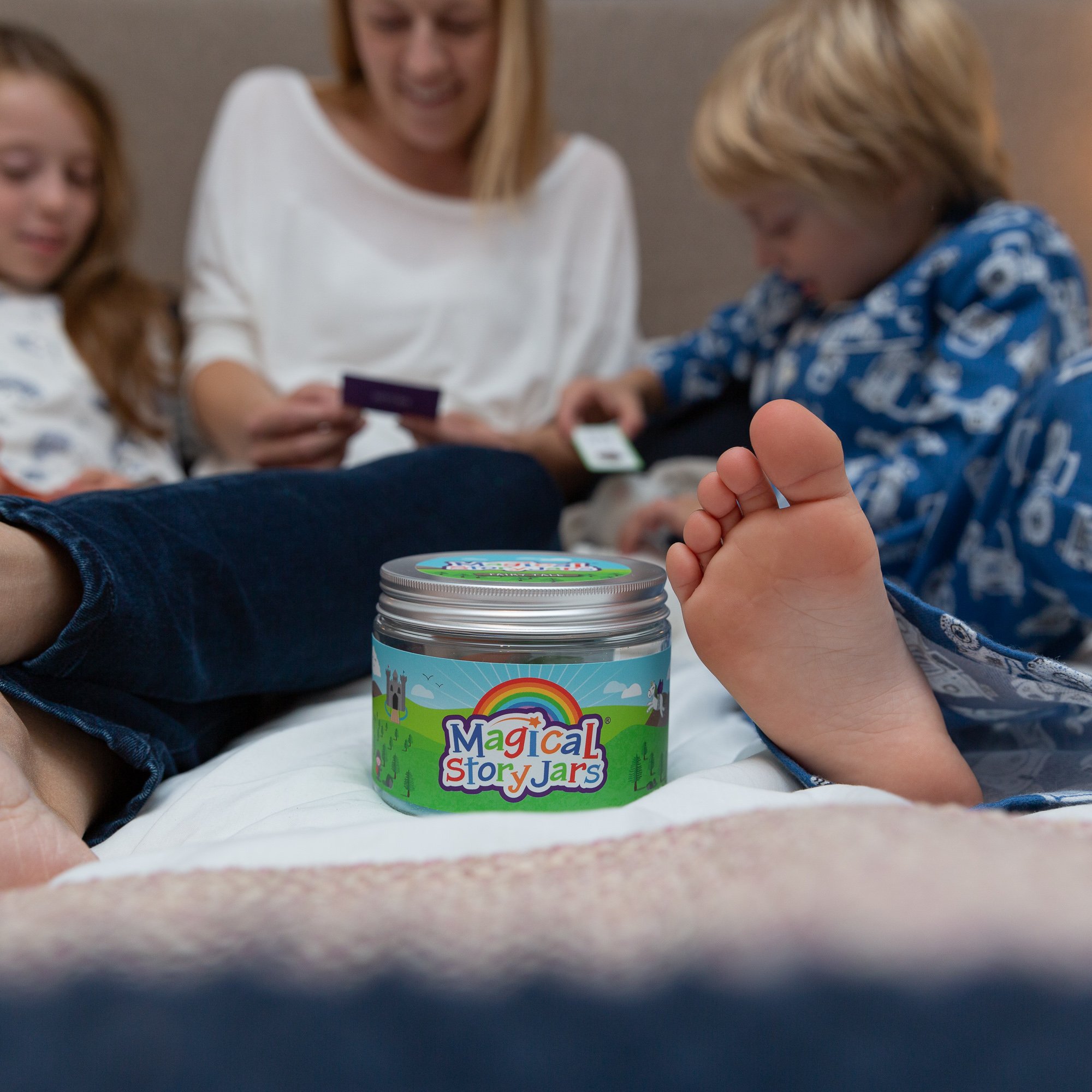How to Make Story Time Magical
With Christmas long gone and some of the coldest months of the year ahead, we’ve now got the perfect excuse (not that we ever needed one) to get cosy and snuggle up with the kids and a good old bedtime story. Cue the cuddles, laughter and memory making.
Books make a great wind-down activity, but how about shaking things up a little, nurturing the inbuilt creativity we’ve all been gifted and creating stories as unique as the people telling them? Enter the fun-filled, memorable and homegrown bedtime story! This activity isn’t about creating award-winning stories; it’s simply about connecting with your children and having an enjoyable and wholesome experience together.
Imaginary stories enable us to be more present with our children and help us to escape the fast-paced modern world we now live in. They transport us to places that only exist deep inside us. They involve thinking and doing, as opposed to simply reading the words. We have no choice but to be immersed in the present moment and to sit with our combined imaginations and endless possibilities. We can enjoy and embrace the process – the giggles and the quibbles about what happens next in the story – without thoughts of our to-do lists whirling around in our heads!
Here are a few pointers to help get you started with homegrown storytelling:
Get cosy and dim the lights to help everyone feel relaxed. Make the goal to cuddle up and have fun making a story together. Swap out the word ‘bedtime’ for ‘story time’ and they will be climbing up the stairs in no time at all.
Recognise that stories aren’t just for bedtime and wrap them around other rituals too. You can go on a storytelling adventure with your children while on a long car journey or peeling the vegetables for dinner. Some families tell us they incorporate homegrown stories into their evening bathtime routine.
Choose your ‘story ingredients’. To keep it simple, start with just three. Pick one or two characters – these are the people or creatures in your story – go with whatever takes your child’s fancy. Next, decide where your story is set. For example, in a lighthouse on a dark and stormy night. Choose something that aligns with your child’s interests so it holds their attention. Finally, you’ll need to think about the plot. This might be centred around a problem, such as something getting lost or stolen.
Don’t get hung up on creating the perfect story but use a basic story structure of a beginning, a middle and an end to help you. The beginning of the story can set the scene – think about the time of day, the weather and the season, and say how your character feels and why. In the middle of the story, aim to have lots of action to drive the plot forward and address the problem. Towards the end of the story, the main problem is solved. Talk about how your characters feel and what they have learned.
While creating stories together with your child, try using expression, adding in sound effects, and giving your characters accents or silly voices. You can even incorporate rhyming or singing into your stories, which children love.
Don’t be afraid to pause and let your child decide what happens next. This keeps them engaged and shows them the story is theirs to own and shape with you.
Children often need to be busy and hands-on and no single storytelling approach will suit every child. They might want to act the story out or use their teddies as characters.
Ask yourselves the question ‘what if?’. What if the rug flew around the bedroom with your child’s favourite toy on it? Look at different objects, something that interests you both, and ask questions about it. Is it magical? Is it a good object or a bad object? Who does it belong to? Has it been lost? These are really effective ways to help trigger story ideas when first starting your story or if you’re part way through and need inspiration for what happens next.
If your children are older and are open to the idea of an ongoing story, consider having different chapters each night. This will help you inadvertently develop plot lines while building a strong story character. Many of our customers tell us that they use the same characters and send them on different adventures.
After you’ve made a few stories together, try taking your storytelling a step further and bring in emotions and morals to make your stories even more meaningful. For example, our Magical Story Jars have characters that enable people to tell stories through traits such as clumsiness, frustration, fearlessness, worry and mischief. This can help children build empathy and explore and talk about their own emotions.
While life isn’t always a fairy tale, I firmly believe it’s possible to create tiny moments of perfection every day. The stories we create together with our children, no matter how good or bad, will be the stories they remember forever. Now that’s something magical.
This article was originally featured in Juno magazine.





